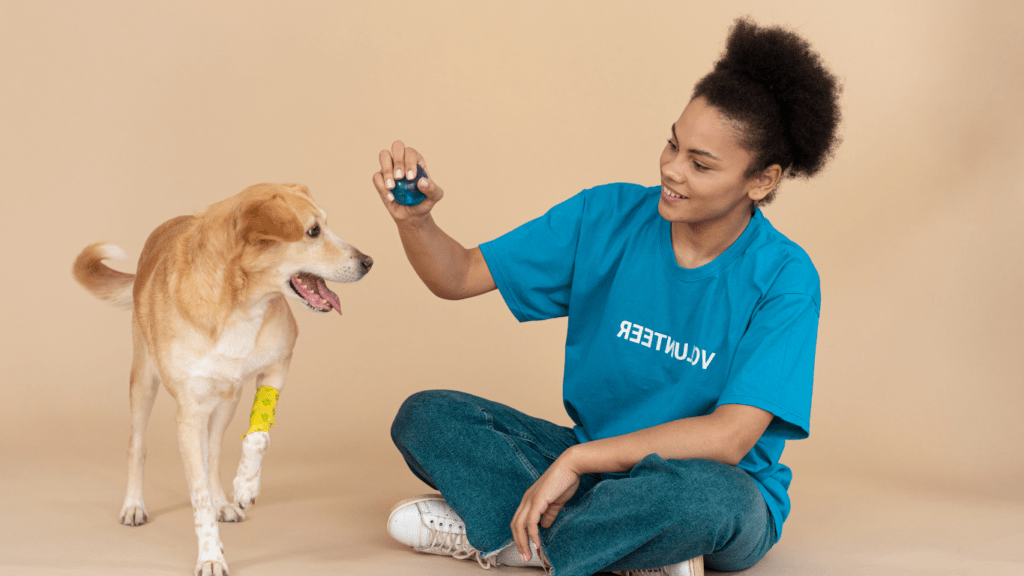As a seasoned pet enthusiast, I’ve witnessed firsthand the transformative power of innovative pet behavior training techniques. In recent years, the field of pet behavior training has seen remarkable advancements that have revolutionized the way we understand and address our furry companions’ behavioral issues. From cutting-edge positive reinforcement methods to interactive technology-driven training tools, the landscape of pet behavior training is constantly evolving to enhance the bond between pets and their owners.
In this article, I’ll delve into the exciting world of advances in pet behavior training, exploring how modern approaches are reshaping the way we communicate with and educate our beloved pets. Whether you’re a new pet parent looking to establish a strong foundation with your four-legged friend or a seasoned pet owner seeking to address specific behavioral challenges, staying informed about the latest trends in pet behavior training is key to fostering a harmonious and fulfilling relationship with your furry companion.
Evolution of Pet Behavior Training Methods
Exploring the evolution of pet behavior training methods unveils a fascinating journey marked by continuous innovation and adaptation. As techniques have progressed, there’s a noticeable shift towards more positive reinforcement strategies and technology-integrated tools. The transformation in training approaches is significantly enhancing the bond between pets and their owners, revolutionizing how behavioral issues are addressed in our furry companions. Staying abreast of these advancements is key to fostering a harmonious relationship with pets, catering to the needs of both novice pet parents and experienced owners navigating behavioral challenges.
Modern Techniques in Pet Behavior Training
Positive Reinforcement Training
I advocate for positive reinforcement training as a highly effective and humane method for shaping desired behaviors in pets. By rewarding good behavior with treats, praise, or toys, pets learn to associate positive actions with positive outcomes. This approach not only helps in correcting unwanted behavior but also strengthens the bond between pets and their owners.
Clicker Training
A technique I find particularly valuable in pet behavior training is clicker training. Using a clicker device paired with treats, pets quickly learn to associate the sound of the clicker with a reward, facilitating precise communication during training sessions. This method allows for clear feedback and enhances the learning process, making it a popular choice among pet trainers and owners alike.
Technology’s Role in Pet Behavior Training
Innovative technologies have revolutionized the field of pet behavior training, offering pet owners effective tools to enhance their training sessions and strengthen the bond with their furry companions. These advancements encompass a wide range of applications that cater to various aspects of pet behavior modification, making training more efficient and enjoyable for both pets and their owners.
- Smart Training Devices:
I’ve observed the increasing popularity of smart training devices that utilize features such as remote control capabilities, automated training programs, and real-time feedback mechanisms. These high-tech gadgets provide pet owners with the ability to monitor their pets’ progress, adjust training strategies as needed, and track long-term behavior changes accurately. - Interactive Games and Apps:
Incorporating interactive games and apps into pet training routines has been a game-changer. These tools not only make training sessions engaging and stimulating for pets but also simplify complex training concepts for owners. From virtual clicker apps to interactive puzzles, these technological solutions enhance the overall training experience, making it more interactive and rewarding. - Virtual Training Platforms:
The emergence of virtual training platforms has democratized access to professional pet trainers and behavioral experts. Through virtual consultations, online classes, and video tutorials, pet owners can now seek guidance and support from experienced professionals without geographical constraints. These platforms offer personalized training plans, behavior analysis tools, and real-time feedback, ensuring effective and tailored training for every pet. - Wearable Technology:
Wearable technology for pets, including smart collars and trackers, plays a vital role in behavior monitoring and modification. These innovative devices provide insights into pets’ activity levels, stress indicators, and behavioral patterns, allowing owners to identify behavioral issues early on and address them proactively through targeted training interventions. By leveraging real-time data and behavioral analytics, pet owners can make informed decisions to promote positive behavior outcomes.
The integration of technology into pet behavior training not only enhances training efficacy but also fosters a deeper understanding of pets’ needs and behaviors. By leveraging these advanced tools and resources, pet owners can navigate behavioral challenges with confidence and empower their pets to thrive in a positive and supportive training environment.
Addressing Common Behavioral Issues in Pets
Building on the evolution of pet behavior training towards positive reinforcement strategies and technological advancements, I delve into addressing common behavioral issues in pets. By understanding prevalent issues and effective solutions, pet owners can establish a harmonious relationship with their furry companions.
Recognizing Anxiety and Fear
Recognizing signs of anxiety and fear in pets is crucial. Symptoms may include excessive barking, destructive behavior, or withdrawal. If such behaviors persist, it’s essential to consult with a professional trainer or veterinarian to address the underlying causes.
Managing Aggression and Reactivity
Aggression and reactivity are common behavioral issues in pets, often stemming from fear, territoriality, or past experiences. Implementing desensitization and counterconditioning techniques can help manage and modify aggressive behaviors over time.
Resolving Separation Anxiety
Separation anxiety can lead to destructive behavior, excessive vocalization, or inappropriate elimination when pets are left alone. Establishing a predictable routine, providing engaging toys, and gradually increasing alone time can help alleviate separation anxiety in pets.
Curbing Destructive Chewing
Destructive chewing can result from boredom, anxiety, or teething in pets. Offering appropriate chew toys, providing mental stimulation, and ensuring regular exercise can redirect this behavior towards more constructive outlets.
Addressing Resource Guarding
Resource guarding occurs when pets exhibit possessive behavior over food, toys, or other items. Training techniques such as teaching trade-offs, desensitization, and reinforcing positive associations can help address resource guarding tendencies.
By proactively addressing common behavioral issues in pets with patience, consistency, and appropriate training techniques, pet owners can cultivate a positive and enriching environment for their beloved companions.




